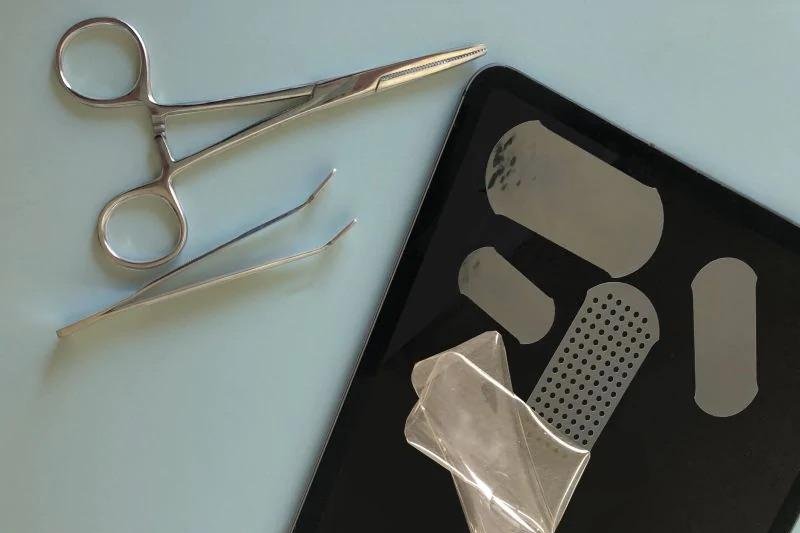The tape was inspired by the sticky material spiders use to capture prey in wet conditions, according to the MIT engineers. Photo courtesy of MIT
Double-sided tape that quickly binds tissues shows promise in animal tests and may eventually offer an alternative to surgical sutures, researchers report.
"There are over 230 million major surgeries all around the world per year, and many of them require sutures to close the wound, which can actually cause stress on the tissues and can cause infections, pain and scars," explained study senior author Xuanhe Zhao. He is an associate professor of mechanical engineering and of civil and environmental engineering at Massachusetts Institute of Technology (MIT).
"We are proposing a fundamentally different approach to sealing tissue," Zhao said in an MIT news release.
The tape was inspired by the sticky material spiders use to capture prey in wet conditions, according to the MIT engineers.
Tests with rats and pig tissues showed that the tape can tightly seal tissues, such as the lungs and intestines, within 5 seconds, according to the study published Oct. 30 in the journal Nature.
Surgical sutures don't work well in all tissues and can cause complications in some patients, the researchers noted. Their tape could eventually be used in place of sutures, they suggested.
The researchers also said the tape works much faster than tissue glues, which typically require several minutes to form a tight bond and can drip onto other parts of the body.
In addition, the new study also showed that the double-sided tape can be used to attach implantable medical devices to tissues, including the heart.
According to study co-lead author Hyunwoo Yuk, a graduate student, "This provides a more elegant, more straightforward and more universally applicable way of introducing an implantable monitor or drug delivery device, because we can adhere to many different sites without causing damage or secondary complications."
The team is conducting more tests in animals and working with doctors to identify additional potential uses for the double-sided tape. However, research in animals doesn't always pan out in humans.
More information
The U.S. National Library of Medicine has more on surgery.
Copyright 2019 HealthDay. All rights reserved.
![]()
















